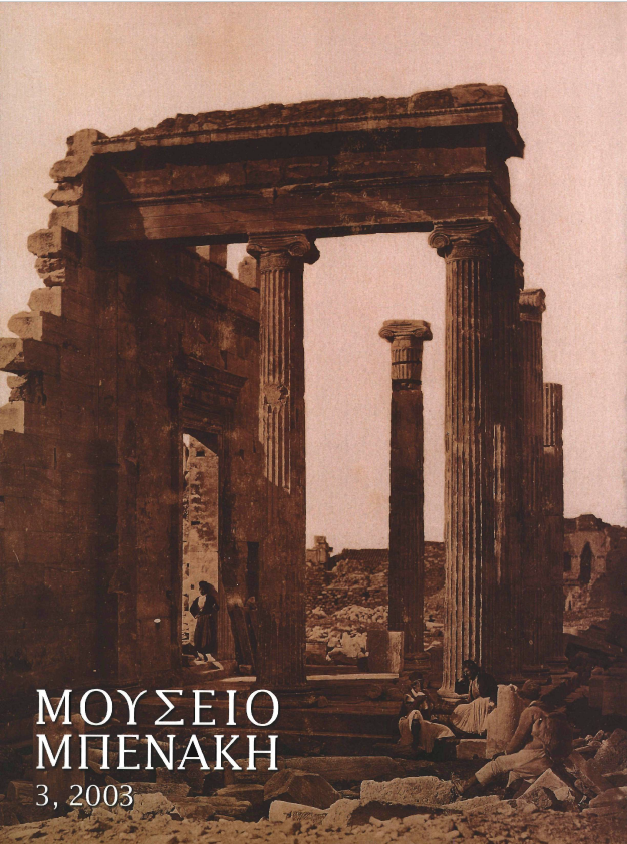Tavernas, cafés and their symbolism in the work of Ghikas
Abstract
The subject of the Greek café and taverna first appears in the work of Ν. Hatzkyriakos-Ghika in the artist's youth and it plays a major recurring role in his thematic repertoire. The inspiration for his first depictions of cafés came from an old family photograph, taken in 1919 in a café in Aidipsos, which 20 years later he turned into a painting entitled Family afternoon at Aidipsos. The years from 1935 to I960 produced works portraying scenes in places of refreshment in the country, mainly at night ( Café at night, Night at Aidipsos, Night — country restaurant), and a group depicting tavernas {Taverna in the country, Taverna and grill etc). These series reached their peak in 1959-1960 with the quartet: Night ritual, Evening memories, High priest Ό\ά The two friends. In these powerfully symbolic works, the artist -as he explains in a long essay on the most representative work of the group, Evening memories— puts himself in the position of the taverna-owner, priest, and judge; at the same time in two other works he identifies the taverna with his studio. Autobiographical elements in these pictures include depictions of Ghikas' two wives, Tiggie and Barbara, at a taverna in The two friends and in Evening memories.
Article Details
- How to Cite
-
Προβίδη Ι. (2018). Tavernas, cafés and their symbolism in the work of Ghikas. Mouseio Benaki Journal, 3, 137–148. https://doi.org/10.12681/benaki.18241
- Issue
- Vol. 3 (2003)
- Section
- Articles

This work is licensed under a Creative Commons Attribution-NonCommercial-ShareAlike 4.0 International License.
The copyright for articles published in Mouseio Benaki is retained by the author(s), with first publication rights granted to the journal. By virtue of their appearance in this open access journal, articles may be used freely for non-commercial uses, with the exception of the non-granted right to make derivative works, with proper reference to the author(s) and its first publication. The Benaki Museum retains the right to publish, reproduce, publicly display, distribute, and use articles published in Mouseio Benaki in any and all formats and media, either separately or as part of collective works, worldwide and for the full term of copyright. This includes, but is not limited to, the right to publish articles in an issue of Mouseio Benaki, copy and distribute individual reprints of the articles, authorize reproduction of articles in their entirety in another publication of the Benaki Museum, as well as authorize reproduction and distribution of articles or abstracts thereof by means of computerized retrieval systems.


